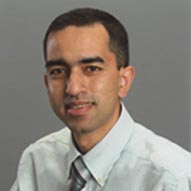Pediatric Spinal Muscular Atrophy (SMA)
Spinal muscular atrophy is a neurodegenerative disease with symptoms that will continue and usually get worse over time. Early treatment can help slow development of the symptoms.
Children’s Health has one of the largest pediatric neuromuscular departments in the country. We are the only CURE SMA Care Center Network in Texas, which means we’re part of a national network that demands the highest standards of care. Our team also is very active in research to help children with this condition.
What is Pediatric Spinal Muscular Atrophy (SMA)?
When a child has SMA, it means specialized cells in their spinal cord don’t work correctly. They don’t have enough of a protein called survival motor neuron (SMN). SMN enables nerves in the spinal cord (motor neurons) to help control muscle movement. Without enough SMN, the motor neuron cells die, causing muscles to become extremely weak. This condition can affect a child’s ability to crawl, walk, breathe and swallow. Children with SMA have poor muscle tone and muscle weakness.
In the U.S., about 1 in 11,000 children are born with this condition. About 1 in 40 to 60 people are carriers who could pass it on to their children.
What are the different types of Pediatric Spinal Muscular Atrophy (SMA)?
SMA can vary widely in terms of the age when it starts, the symptoms children have and how quickly the disease progresses. The earlier SMA starts, the more it affects muscle movement. It is usually divided into four types:
Spinal muscular atrophy Type I
This is the most common and the most severe type of SMA. It usually shows up in the first few months of life with low muscle tone and decreased movements. Babies will have trouble breathing and swallowing.
Spinal muscular atrophy Type II
This type of SMA usually appears when a child is between six and 18 months old. Babies can sit but usually can’t walk or stand without help.
Spinal muscular atrophy Type III
This type of SMA starts after 18 months of age. Children start to develop fatigue, several falls a day, abnormalities walking and may start to walk on their toes. Over time, they usually need help walking.
Spinal muscular atrophy Type IV
This type of SMA, which is very rare, appears in adulthood and typically has milder symptoms than SMA that starts early in life.
What are the signs and symptoms of Pediatric Spinal Muscular Atrophy (SMA)?
- Difficulty swallowing, breathing or holding up the head
- Tremor in the tongue
- Difficulty sitting, standing or walking
- Fatigue that progresses to trouble walking
- Walking on toes
- Curvature of the spine
How is Pediatric Spinal Muscular Atrophy (SMA) diagnosed?
Usually a child is brought to the doctor because they are showing early signs or symptoms of SMA, such as having trouble breathing, sitting or standing, holding their head up and decreased movement of the legs and arms.
A neurologist will examine the child. If we suspect SMA, we will confirm the diagnosis with a free blood test. If a child tests positive, we will also test the parents or siblings to see if they have the condition or are carrying it in their genes. Most states screen all newborns for SMA at birth.
What causes Pediatric Spinal Muscular Atrophy (SMA)?
This condition can be spontaneous or inherited, which means it’s passed from parent to child in their genes. Sometimes genes go through changes (mutations) that affect how they work. A child will have SMA if both parents have the same mutation. If only one parent has the mutation, the child will not have the condition, but could pass it on to their own children. That is called being a carrier.
How is Pediatric Spinal Muscular Atrophy (SMA) treated?
We typically treat spinal muscular atrophy with therapies that help the body produce more of the SMN protein. Having more SMN protein can slow the development of symptoms, helping a child walk, sit or swallow more easily – especially if treatment is started very early.
Some therapies are given through a spinal tap. Others are a liquid that is swallowed or injected. Your child’s treatment will depend on their age and the stage of the condition. Children’s Health℠ is also involved in research to create new treatments for this condition and help children with SMA live longer, healthier lives.
In addition to medication, your child will have access to a care team that works closely together to care for every aspect of their health, including:
- Neurologists who specialize in nerve and muscle conditions
- Cardiologists who treat the heart
- Pulmonologists who treat the lungs
- Nutritionists who help ensure kids get the right nutrients in their diet
- Physical and occupational therapists to help kids stretch their muscles and move more easily
- Nurses who specialize in neurology disorders
- Social workers and case managers who help manage each child’s overall care
Pediatric Spinal Muscular Atrophy (SMA) Doctors and Providers
A range of specialists care for children with SMA, because these kids can have trouble controlling the muscles in different parts of their body. Children’s Health offers care from top pediatric experts in many different specialties.
-
 Steven Copenhaver, MD Pediatric Pulmonologist
Steven Copenhaver, MD Pediatric Pulmonologist -
 Susan Iannaccone, MD Pediatric Neurologist
Susan Iannaccone, MD Pediatric Neurologist -
 Peter Schochet, MD Pediatric Pulmonologist
Peter Schochet, MD Pediatric Pulmonologist -
 Pravin Sah, MD Pediatric Pulmonologist
Pravin Sah, MD Pediatric Pulmonologist
Frequently Asked Questions
-
What part of the body does spinal muscular atrophy affect?
This condition affects nerve cells that help control the movement of muscles in different parts of the body, particularly in the arms, legs, head and neck.
-
At what age is spinal muscular atrophy diagnosed?
The different types of SMA appear at different ages.
- Type I is usually diagnosed before a baby is six months old.
- Type II is usually diagnosed between six and 18 months.
- Type III is usually diagnosed between 18 months and three years, but it can be diagnosed later.
- Type IV occurs in adulthood.